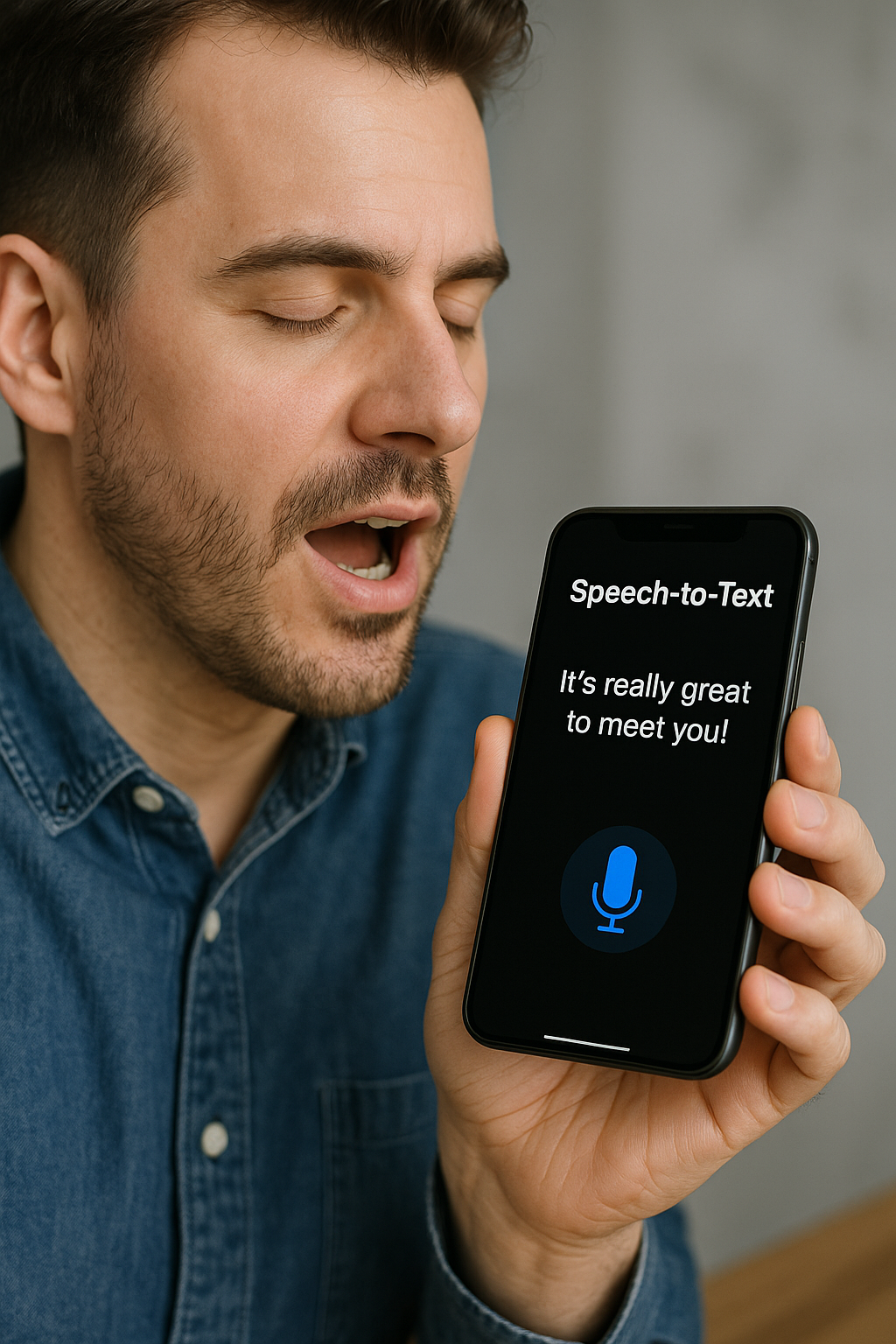Understanding the Invisible Complexity Behind Live Voice-to-Text
When you speak to a voice assistant or get captions on a live call, you’re witnessing a quiet feat of engineering in action: real-time transcription. It’s the ability for AI to listen to human speech and convert it into readable text—as it’s being said, with no noticeable delay.
But while the result may seem simple, the process is anything but. Real-time transcription is one of the most technically demanding tasks in modern AI. Let’s explore why.
Speech Is Messy—And Humans Don’t Speak in “Sentences”
Unlike written text, speech isn’t neatly packaged. People interrupt themselves, trail off, switch topics, and use filler words (“uh,” “you know,” “like”). There are also false starts:
“So what I… sorry, let me start over.”
Plus, spoken language often lacks clear punctuation or structure. A human listener can infer meaning, but machines have to guess—in real-time.
Accents, Dialects, and Personalized Language
Humans adapt. We adjust to a speaker’s accent, pace, and rhythm within a few seconds. For AI, this isn't so easy.
- A New Yorker saying “cawfee” vs. someone from London saying “kah-fee”
- Industry jargon like “kilowatt-hour” or “polypharmacy”
- Multilingual or code-switching environments
- Names, locations, or brand terms not found in standard datasets
Each adds layers of variation that can tank an AI’s confidence if it wasn’t trained on similar samples.
Background Noise and Overlapping Speech
A barking dog. A coworker walking by. A customer and agent talking over each other.
Noise isn’t just annoying for humans—it’s devastating for transcription models.
Noise isn’t just annoying for humans—it’s devastating for transcription models.
In real-time scenarios, the AI doesn’t have the luxury of post-processing or re-listening. It has to parse speech and isolate the right voice instantly.
Low Latency vs High Accuracy—Pick Two?
Users expect captions or call assistance to happen with almost zero delay—usually under 300 milliseconds. That doesn’t leave much time for the model to:
- Break audio into chunks
- Run it through a neural network
- Interpret words, grammar, tone, context
- Assemble and correct the output (ideally before showing it to the user)
The faster the model, the less time it has to “think.” But the slower it is, the more the experience falls apart. Solving this is a delicate balancing act of architecture, optimization, and deployment.
Context Is King—And Real-Time AI Has Very Little
AI transcription models work best when they can analyze a full sentence or conversation. But real-time transcription doesn’t give them that luxury. They have to output words as they’re spoken, even if the meaning isn't yet clear.
For example:
“I didn’t say she stole the money.”
Depending on emphasis, this sentence has seven different meanings.
Offline processing can resolve ambiguity with additional context. Live transcription? Not so much.
Infrastructure and Hosting Cost Aren’t Trivial
Real-time AI transcription requires:
- GPU-powered servers (expensive)
- Specialized models optimized for streaming
- Scalable pipelines (for spikes in call volumes)
- Lightning-fast networking to avoid latency
- Redundancy and failover to ensure uptime
Many providers cut corners here—or are forced to charge a premium just to operate.
The Bottom Line
Accurate real-time transcription sits at the intersection of linguistics, signal processing, machine learning, and systems engineering. Speech isn’t just text—you have to decode meaning from a living, breathing stream of sound, compressed into milliseconds.
The best AI systems can get it right 80–95% of the time, depending on the environment. But reaching that level—especially in specialized domains like healthcare, legal, or regulated call centers—takes deep training, massive capital investment, and careful design.
